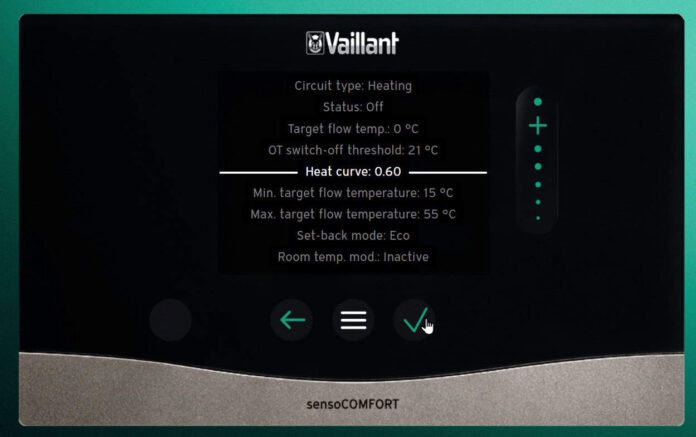University of Salford
Will your heat pump give you a cold bath? New research says not…
With gas boilers being phased out, concerns have been raised about whether heat pumps will provide enough hot water for a steaming bath at the end of a long day.
Researchers from Energy House 2.0 at the University of Salford have tested heat pumps under the toughest climate-controlled conditions to see whether they can live up to the daily hot water needs of the average family – the first time that heat pumps have been tested to deliver hot water in warm and cold climates.
The research showed that heat pumps can power enough hot water to meet the average family’s needs without you languishing in a cold bath.
Professors at The University of Salford’s Energy House 2.0 have conducted the first research on whether the low carbon technology can deliver hot water that meets British Standards. Energy House 2.0 is a specially built climate chamber that recreates temperatures ranging from -20˚C to +40˚C, as well as simulating wind, rain, snow and solar radiation.
The chamber enables Barratt Redrow to test methods of construction and products at temperatures that would represent anything from a Nordic winter to an African summer. The Energy House 2.0 chamber can simulate the weather conditions in 95% of the world’s current climates, as well as the climates predicted in the future.
The research was carried out on a concept home built by Barratt Redrow and Saint-Gobain UK & Ireland, known as eHome2 at the Energy House 2.0.
As the UK prepares to go gas-free under new Government rules to reduce the carbon footprint of homes, researchers have spent the past 16 months testing different systems to see which ones will run a consumers’ home in the most efficient way at the lowest cost.
Professor Richard Fitton at the University of Salford said: “Following our detailed study on heat pump performance for space heating tasks, hot water provision was always the missing piece of the puzzle, it was reassuring to see that under typical winter conditions that delivered efficiency was over 180%, and hot water demands were being met. We look forward to advancing this work to examine dynamic pricing, solar PV and battery storage later this year. We will also be looking to stress these systems under some more extreme temperature relative humidity scenarios.”
Oliver Novakovic, Head of Technical & Innovation at Barratt Redrow, added: “It’s understandable that consumers have some concerns around whether a new technology such as heat pumps can meet their daily requirements for heating and hot water in their homes. Afterall, nobody wants a cold bath. These rigorous hot water tests – along with our earlier tests on heating – demonstrate that heat pumps are an effective and cost-efficient alternative to gas boilers.
“Our own research shows that consumers prefer to buy homes that are much better for the environment.”
There are two air source heat pumps installed in eHome2: the Curv 195-litre air source heat pump located internally in a cupboard and the 236-litre storage cylinder attached to a Vaillant system.
Both the Vaillant and Curv systems were tested for their ability to meet domestic hot water demands under extreme hot and cold climate conditions.
Vaillant system
The Vaillant system – featuring a 236-litre Unistor cylinder and aroTHERM air source heat pump (ASHP) – came in top as the most stable and reliable hot water for a house.
The heat pump maintained consistent hot water temperatures within the target range, from 25°C to 55°C, across varying environmental temperatures (5°C, 7°C and 14°C).
The bath tap, which has the highest demand, maintained a steady flow rate for both hot water and mixed water, demonstrating the system’s ability to handle the peak demands of the home without a noticeable drop in performance.
Energy consumption data reveals that the heat pump’s electricity usage decreased as the chamber temperature increased. At 5°C, the heat pump consumed an average of 8.58 kWh per day, whereas at 14°C, the consumption dropped to 6.62 kWh per day. This trend reflects the impact of ambient temperature on the heat pump’s performance, with lower temperatures requiring more energy to maintain hot water temperatures.
While its performance diminishes in colder environments, the buffer tank played a crucial role in reducing short cycling, enhancing system reliability and efficiency by maintaining a consistent water temperature in the cylinder.
Curv System
The Curv system, a compact 195-litre stand-alone cylinder with a smaller buffer tank, sits in a cupboard within the eHome2 at Energy House 2.0, providing a solution for terraced homes and apartments. The Curv system only provides hot water, not heating.
The energy-efficient heat pump solution held similar temperatures as the Vaillant system, although it had minor fluctuations at lower temperatures due to the smaller buffer tank.
The rate of water flow was consistent, meeting required volumes for both bath and kitchen taps for the average family. Its energy consumption was lower than the Vaillant system, dropping from 5.61 kWh/day at 5°C to 4.15 kWh/day at 14°C.
Heat pumps can handle family hot water needs
Based on to the test results, both systems demonstrated the ability to meet domestic hot water needs under varying conditions.
The Vaillant system provides higher stability and reliability due to its buffer tank, while the Curv system provides a more compact and energy-efficient solution.
Professor Lubo Jankovic at the University of Salford, who led this work, said: “We have put the two heat pumps under large daily hot water use based on a British Standard to cover the worst-case scenario. This included water draw-offs for various uses, from dish washing to household cleaning, baths, showers and other daily demand. It was encouraging to see that both heat pumps provided sufficient hot water volume and temperature throughout each day of testing. We are delighted that our research can provide reassuring information to consumers about the forthcoming transition from gas boilers to heat pumps.”







